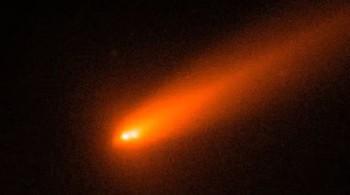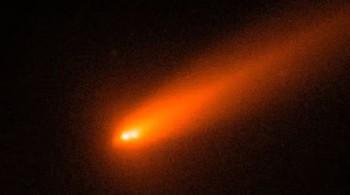
Oldest known RNA found in Siberian mammoth that died 39,000 years ago
In a groundbreaking discovery, scientists have successfully recovered the oldest-known RNA, a molecule essential for most biological functions, from a woolly mammoth that roamed the Siberian landscape approximately 39,000 years ago. This remarkable finding has left the scientific community in awe, as it was previously believed that RNA, being a highly fragile and susceptible molecule, could not survive for such an extended period.
The RNA, which was isolated and sequenced, was extracted from muscle tissue in the left front leg of a juvenile male mammoth. The carcass of this ancient creature was discovered in 2010, and since then, it has been the subject of extensive research. The fact that the RNA was found in muscle tissue, which is known to be rich in RNA, increased the chances of its preservation.
According to the researchers, the RNA was remarkably well-preserved, considering its age. “Nobody really thought this was possible,” said a biologist involved in the study. The discovery has significant implications for our understanding of the evolution of life on Earth and the possibility of recovering genetic material from ancient organisms.
RNA, or ribonucleic acid, plays a crucial role in the functioning of all living cells. It is responsible for transmitting genetic information from DNA to the rest of the cell, where it is used to synthesize proteins. The recovery of RNA from a 39,000-year-old mammoth is a testament to the incredible resilience of this molecule and the potential for preserving genetic material over thousands of years.
The discovery was made possible by advances in sequencing technology, which have enabled scientists to analyze and decode the genetic material of ancient organisms. The researchers used a combination of cutting-edge techniques, including next-generation sequencing and bioinformatics, to isolate and sequence the RNA.
The study of ancient RNA has the potential to reveal valuable insights into the evolution of life on Earth. By analyzing the genetic material of ancient organisms, scientists can gain a better understanding of how species adapted to their environments, how they interacted with each other, and how they responded to changes in their ecosystems.
The recovery of RNA from a 39,000-year-old mammoth also raises hopes for the possibility of recovering genetic material from other ancient organisms. This could include extinct species, such as the dodo or the passenger pigeon, as well as ancient humans and other hominins.
However, the recovery of RNA from ancient organisms is not without its challenges. The process of extracting and sequencing ancient RNA is extremely delicate and requires specialized equipment and expertise. Additionally, the risk of contamination with modern DNA or RNA is high, which can compromise the accuracy of the results.
Despite these challenges, the discovery of RNA in a 39,000-year-old mammoth is a significant breakthrough that has the potential to revolutionize our understanding of the evolution of life on Earth. As scientists continue to explore the possibilities of recovering genetic material from ancient organisms, we can expect to gain a deeper understanding of the history of our planet and the diversity of life that has existed here.
The study of ancient RNA also has implications for the field of medicine. By analyzing the genetic material of ancient organisms, scientists may be able to identify new genes or gene variants that could be used to develop new treatments for diseases.
In conclusion, the recovery of RNA from a 39,000-year-old mammoth is a remarkable achievement that has the potential to transform our understanding of the evolution of life on Earth. As scientists continue to explore the possibilities of recovering genetic material from ancient organisms, we can expect to gain a deeper understanding of the history of our planet and the diversity of life that has existed here.
News Source: https://www.reuters.com/science/rna-recovered-siberian-mammoth-that-died-39000-years-ago-2025-11-14/





